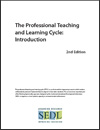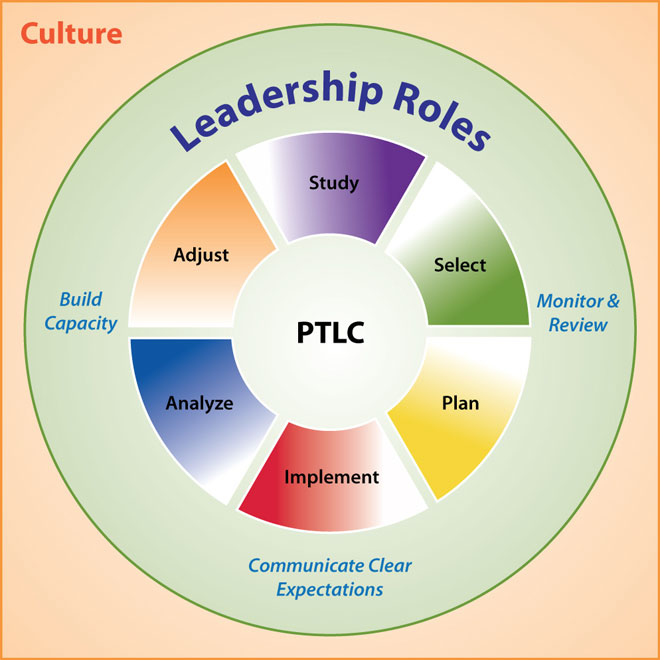The Professional Teaching and Learning Cycle: Introduction

Author: SEDL
| Price: Available free online |
Available online: PDF
![]()
The professional teaching and learning cycle (PTLC) is a professional development process in which teachers collaboratively plan and implement lessons aligned to their state standards. This process is an important part of the Working Systemically approach, designed by SEDL to improve a school system’s capacity to increase student achievement. Working in partnership with the Charles A. Dana Center at the University of Texas at Austin, SEDL developed this job-embedded process that reflects the research on professional development and school improvement.
PTLC is a critical component of the Working Systemically approach that directly impacts classroom instruction and student learning. It is a vehicle for teacher collaboration and sharing, and the process improves alignment of curriculum, instruction, and assessment to the state standards.
PTLC is an ongoing, cyclic process that is designed to improve the
- quality of professional development (ongoing, job-embedded, results-driven);
- professional collaboration among staff;
- use of data to inform instructional and programmatic decisions;
- alignment of curriculum, instruction, and assessment to the state standards;
- quality and coherence of instruction across classrooms;
- monitoring of student learning; and
- leadership-support systems for continuous school improvement.
Typically, interventions aimed at improving student achievement target only individual components of school improvement and professional development. A school improvement initiative might focus on improving alignment of the curriculum or on the collection and use of data. These interventions tend to result in marginal gains in student achievement, but little evidence suggests that those gains persist beyond the time of the intervention. PTLC, on the other hand, is designed to work systemically. It addresses teacher quality and school improvement both collectively and holistically, thus increasing the likelihood that improvements will be sustained over time.

